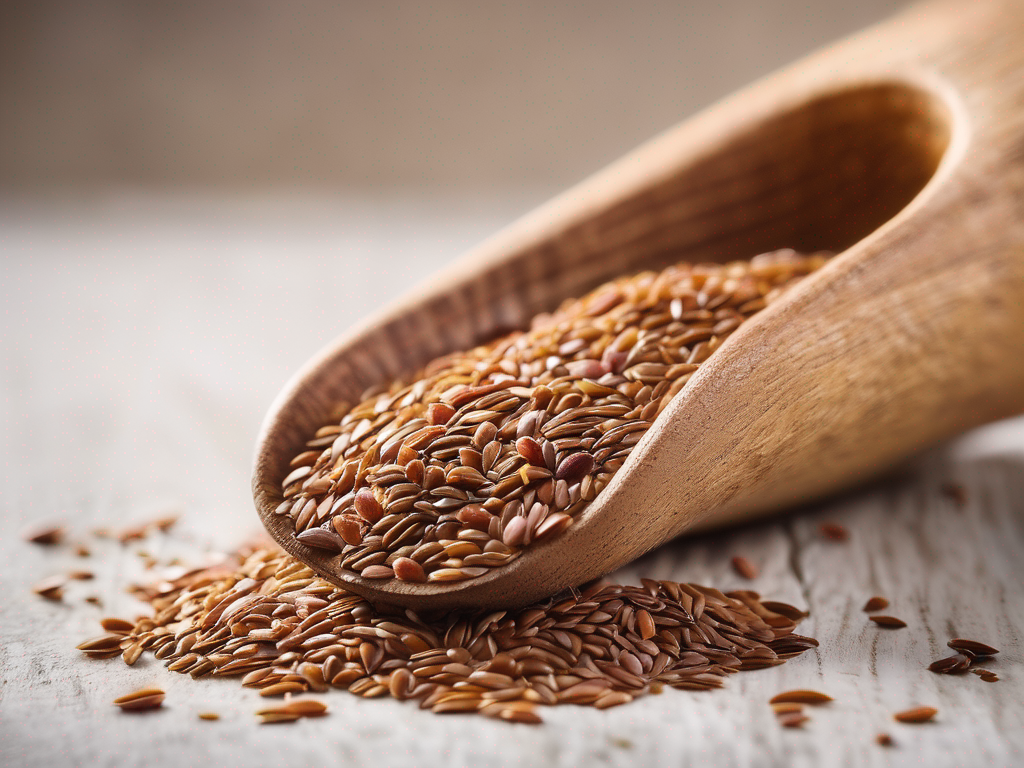
Is Your Flaxseed Safe to Eat? How to Tell if Flaxseed has Gone Bad
Get Your Free Food Safety Cheat Sheet
30 most common foods with instant answers. Print it and stick it on your fridge—completely free!
Is Your Flaxseed Safe to Eat? How to Tell if Flaxseed has Gone Bad
Flaxseed is a popular superfood known for its numerous health benefits, including being an excellent source of omega-3 fatty acids and fiber. Whether you use flaxseed in smoothies, baked goods, or as a topping for yogurt, it's essential to ensure that your flaxseed is fresh and safe to consume. In this blog post, we will discuss how to tell if flaxseed has gone bad and provide you with practical tips for storing flaxseed properly. (Flaxseed)
Understanding Flaxseed Shelf Life
Flaxseed, like many other seeds, has a limited shelf life due to its high oil content. Over time, exposure to air, light, and heat can cause flaxseed to go rancid, leading to a stale or off-flavor. To ensure that you are consuming fresh and nutritious flaxseed, it's crucial to understand the signs of spoilage and how to store flaxseed correctly.
Signs that Flaxseed has Gone Bad
Here are some indicators that your flaxseed may have gone bad and should be discarded:
-
Rancid Smell: Fresh flaxseed should have a mild, nutty aroma. If your flaxseed smells off, rancid, or sour, it is likely spoiled.
-
Unpleasant Taste: Rancid flaxseed will have a bitter, unpleasant taste compared to the mild and nutty flavor of fresh flaxseed.
-
Change in Color: Fresh flaxseed is typically brown or golden in color. If you notice any discoloration, such as dark spots or a greyish hue, the flaxseed may have deteriorated.
-
Mold Growth: Visible mold or mildew on the surface of the flaxseed is a clear indication of spoilage and should be promptly discarded.
Proper Storage of Flaxseed
To extend the shelf life of your flaxseed and maintain its freshness, follow these storage tips:
-
Airtight Container: Store flaxseed in an airtight container to protect it from exposure to oxygen, which can accelerate rancidity.
-
Cool and Dark Location: Keep flaxseed in a cool, dark place away from heat sources, such as stoves or direct sunlight.
-
Refrigeration: For longer-term storage, consider storing flaxseed in the refrigerator or freezer to preserve its freshness and prevent spoilage.
-
Ground vs. Whole Flaxseed: Whole flaxseed has a longer shelf life than ground flaxseed due to its protective outer shell. Consider grinding flaxseed as needed to maintain its freshness.
Tips for Checking Flaxseed Quality
To ensure that your flaxseed is safe to consume, consider the following tips for checking its quality:
-
Sensory Evaluation: Use your senses of sight, smell, and taste to assess the quality of flaxseed before consuming it.
-
Freshness Test: Conduct a freshness test by soaking a small amount of flaxseed in water. Fresh flaxseed will absorb the water and form a gel-like consistency, while rancid flaxseed may remain hard and intact.
-
Purchase in Small Quantities: To prevent flaxseed from going bad before you can use it up, consider purchasing smaller quantities or buying whole flaxseed and grinding it as needed.
Conclusion
In conclusion, maintaining the freshness and quality of your flaxseed is essential for enjoying its nutritional benefits. By understanding the signs of spoilage, practicing proper storage techniques, and conducting quality checks, you can ensure that your flaxseed remains safe to eat. Remember to trust your senses and err on the side of caution if you suspect that your flaxseed has gone bad. By following these tips, you can continue to incorporate this nutritious seed into your diet with confidence.
For more information on flaxseed and other food safety tips, stay tuned for our future blog posts. Stay healthy and enjoy your flaxseed responsibly! (Flaxseed)
Authoritative Food Safety References
These agencies and university labs inform every tip and health precaution we publish.
USDA FoodKeeper – Cold Storage Guidelines
Official refrigerator, freezer, and pantry timelines maintained by the U.S. Department of Agriculture.
Visit USDA FoodKeeperFDA Produce Safety Rule & Grower Guidance
Field-to-fridge handling practices that prevent contamination of fruits, vegetables, and leafy greens.
Visit FDA Produce SafetyCDC Foodborne Illness Prevention Hub
Surveillance-backed guidance on pathogens, symptoms, and steps to reduce foodborne illness risk.
Visit CDC Food SafetyUC Davis Postharvest Technology Center
University research detailing optimal storage atmospheres for produce after harvest.
Visit UC Davis PostharvestPenn State Extension – Home Food Preservation & Safety
Peer-reviewed extension bulletins on safe canning, chilling, and reheating practices.
Visit Penn State ExtensionGet Your Free Food Safety Cheat Sheet
30 most common foods with instant answers. Print it and stick it on your fridge—completely free! Want more? Upgrade to the complete guide with 70+ foods.
Scan your food directly and get instant safety info using our AI-powered camera feature.